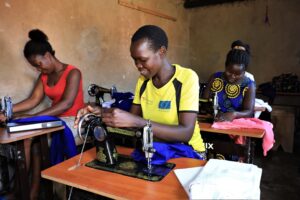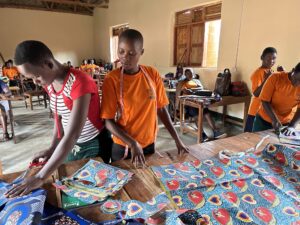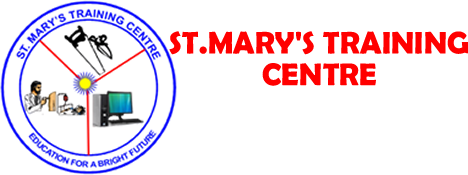Tailoring in the Training Centre
Tailoring courses in Uganda are designed to provide students with a solid foundation in garment construction, pattern making, design principles, and sewing techniques. These courses are offered in various educational institutions, vocational training centers, and sometimes through specialized workshops or apprenticeships.
Course Curriculum:
1. Introduction to Sewing Techniques:
Understanding sewing tools and equipment.
Basic hand stitching methods.
Introduction to sewing machine operations and maintenance.
Fabric types, properties, and their suitability for different garments.
2. Pattern Making:
Principles of pattern drafting and layout.
Taking accurate body measurements.
Drafting basic patterns for garments such as skirts, blouses, trousers, and dresses.
Alteration and adjustment techniques for fitting.
3. Garment Construction:
Cutting fabric using patterns.
Sewing various types of seams and finishes.
Assembly of garments: sleeves, collars, cuffs, zippers, and pockets.
Understanding garment construction techniques for different clothing styles.
4. Fashion Design and Styling:
Elements and principles of design.
Color theory and its application in fashion.
Sketching and rendering fashion designs.
Developing personal style and creativity in garment design.
5. Textile and Fabric Manipulation:
Fabric dyeing, printing, and embellishment techniques.
Understanding different textiles and their characteristics.
Creating textures, pleats, gathers, and other fabric manipulations.
6. Entrepreneurship and Business Skills:
Basics of entrepreneurship in the fashion industry.
Marketing and branding for a tailoring business.
Costing, pricing, and budgeting for garments.
Client communication and customer service.
7. Specialization and Advanced Techniques:
Advanced pattern making and draping techniques.
Tailoring for specialized garments like wedding dresses, suits, or traditional wear.
Exploring niche areas such as couture sewing, haute couture techniques, or sustainable fashion practices.
Practical Training:
Tailoring courses in Uganda often emphasize hands-on training and practical application of learned skills. Students typically work on various projects throughout the course, creating garments from scratch, altering clothing items, and practicing different sewing techniques under the guidance of experienced instructors.
Duration and Certification:
The duration of tailoring courses in Uganda can vary from a few months to a couple of years, depending on the level of expertise and depth of the curriculum. Some courses offer certifications or diplomas upon completion, validating the skills acquired during the training.
Career Opportunities:
Graduates from tailoring courses in Uganda can pursue diverse career paths, including:
Fashion designers
Tailors or dressmakers
Costume designers for theater or film
Entrepreneurs establishing their fashion businesses
Pattern makers or garment technicians in the clothing industry
Instructors or educators in fashion design and tailoring schools
Conclusion:
Tailoring courses in Uganda provide a comprehensive education in garment construction, design, and fashion entrepreneurship. With a focus on both practical skills and theoretical knowledge, these courses empower individuals with the expertise needed to thrive in the fashion industry, whether by pursuing a career in fashion design, starting their own clothing business, or contributing to the textile and apparel sector. The blend of creativity, technical proficiency, and business acumen learned through these courses prepares students for a dynamic and rewarding career in the field of tailoring and fashion.

Tree Trimming
Students showing their sewing skills that have been acquired

Cutting
Students cutting after measuring stage

Measurement
Students acquiring training skills in measuring before cutting
Let’s Get Started
Your perfect nursing training awaits. Let’s get the ball rolling.
